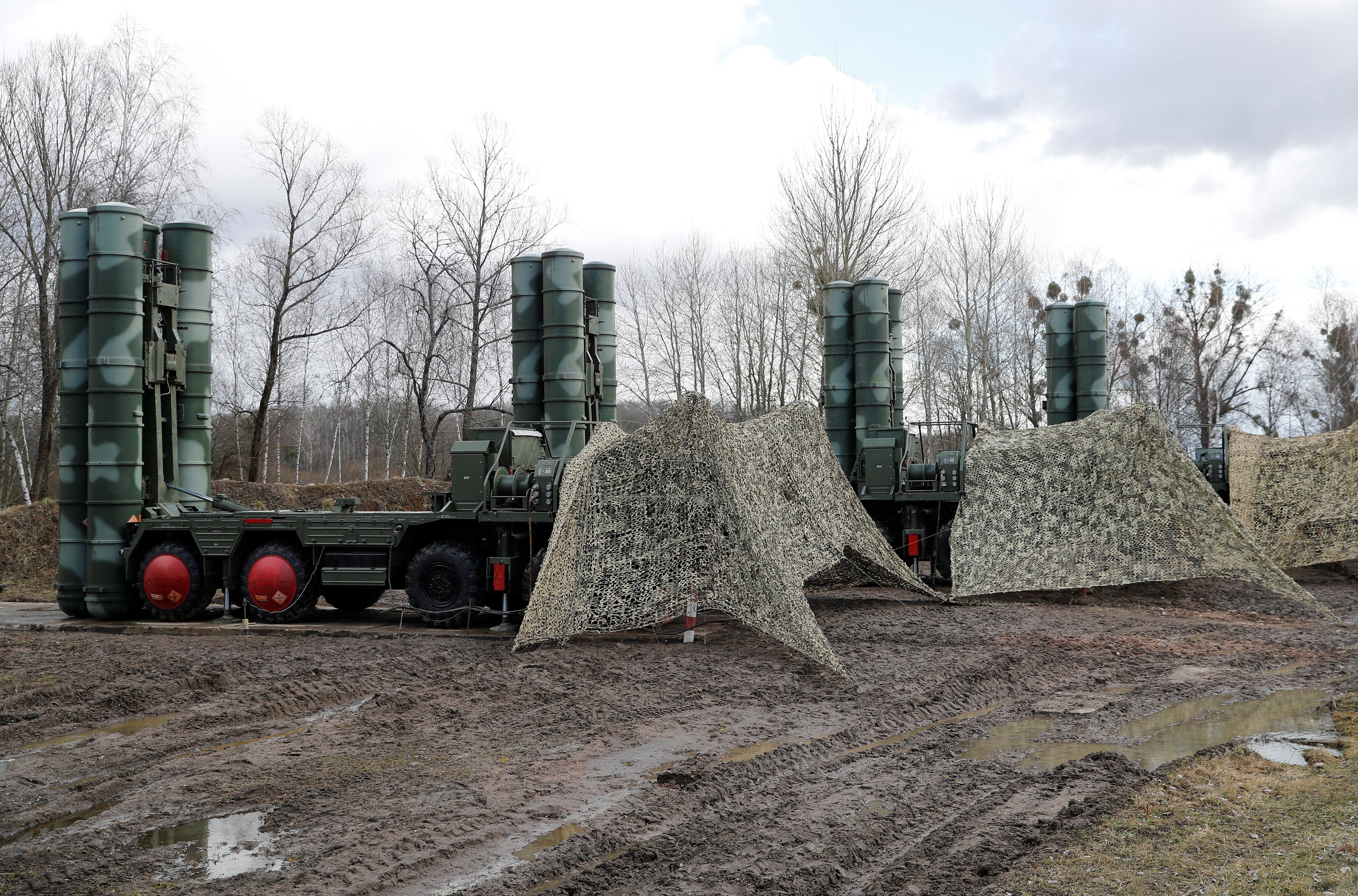The Turkey-U.S. Dispute over Use of Russian S-400 System

The U.S. is criticising Turkey’s decision to purchase the S-400 system, arguing that the deployment of a Russian installation in the country threatens the security of the new F-35 multi-role jets. Turkey planned to buy 100 of these advanced planes and its companies have played an important role in the consortium responsible for their development. The companies were responsible for 937 parts used in the plane’s production and since 2002, Turkey has invested around $1.25 billion in the F-35 programme. The U.S. also claims that the S-400 will give the Russians the opportunity to spy on NATO and will complicate military cooperation with Turkey. The Turks consider the transaction a sovereign decision that does not compromise its commitments as a NATO ally and perceive the U.S. opposition towards it as purely political. President Recep Tayyip Erdoğan, who was the main decision-maker pushing for the deal, emphasizes that there is no way Turkey will withdraw from the purchase.
Reasons for Buying the S-400
The decision to acquire the Russian system is part of Turkey’s desire to achieve strategic autonomy. By 2053, Turkey wants its arms industry to be self-sufficient, which has forced the country to systematically reduce its dependence on Western suppliers, currently dominant in arms transactions, and acquire new technologies. According to the decision-makers, the S-400 purchase serves both goals. They repeatedly emphasized that the Russian offer, in contrast to Western allies’ proposals, included technology transfer. An additional advantage was the time to implementation, with the Turks arguing that an increase in the ballistic missile threat in the region requires urgent action. The desire to swiftly acquire the air-and-missile defence system was said to have even increased as a result of the huge purge in its air force after the 2016 coup, which weakened Turkey’s air defence capabilities. The price was also advantageous—$ 2.5 billion for four batteries.
However, some doubts tied to the transaction cast a shadow over the official reasons for the purchase. Importantly, the scope of technology transfer is unclear. It is unlikely that Russia would share advanced knowledge with a NATO member. In addition, the S-400 will not be integrated with Alliance infrastructure, weakening its effectiveness in missile defence, and the cost of its acquisition is disproportionate to the probable U.S. response. Thus, the purchase of the S-400 seems to result from two factors. The first is the complicated decision-making process Turkish politicians set for themselves. They have entangled the S-400 in so many initiatives that withdrawal from the transaction will be difficult and expensive. At first, the arguments about the purchase were an element of pressure on the Allies to make them present better offers for the sale of their systems. Later, they became a tool in Turkey’s complicated game to play Russia against the U.S. in Syria. This proved to be a short-sighted tactic, as the Russians also began to use the S-400 contract as a bargaining chip, for example, during negotiations concerning the Syrian Idlib province, in which Russia led Turkey to understand that withdrawal from the contract equalled an acceleration of the Assad regime’s offensive in this area, something Turkey particularly fears because of the likelihood of a rapid inflow of a large number of refugees. Second, the transaction also seems to result from Turkish decision-makers’ deep distrust of the U.S. and their belief that the Americans are sabotaging Turkey’s development because it is not in the Americans’ interests.
Consequences of the S-400 Purchase—U.S. actions
The first step by the U.S. may be to block the transfer of F-35s to Turkey and to remove Turkish companies from the consortium producing the jet. On 11 June, all training of Turkish pilots on the F-35 was ceased. Additionally, acting Secretary of Defense Patrick Shanahan announced that Turkish personnel will have to leave the U.S. by 31 July and that the Turks would be excluded from receiving information on the jet’s development programme. This is independent of sanctions that may come as a result of the “Countering America’s Adversaries Through Sanctions Act”. The law allows the imposition of restrictions on entities engaged in transactions with the Russian defence industry (the S-400 producer, Almaz-Antey, is on the sanctioned list). The law constitutes another element of pressure and is even more probable given the strong and bipartisan support in Congress for sanctioning Turkey. For example, a bill has been introduced to both houses under the common name “Protecting NATO Skies Act of 2019” with the purpose to stop the sale of the F-35s to Turkey if it sticks with the S-400 purchase. Although the Treasury Department has a decisive role in implementing sanctions, the attitude in Congress is important since it weakens the likelihood that President Donald Trump will issue a waiver.
In addition, recent U.S. administration actions suggest that the Americans are ready to exert even more pressure. The next steps may include, for example, greater limitation of military cooperation with Turkey (refusal to service equipment and components purchased so far) and pressure on NATO allies to do the same. The U.S. could also reorganise its military presence in the Middle East and Eastern Mediterranean, for example, by strengthening cooperation with Greece at Turkey’s expanse. The recent support for the emerging alliance between Israel, Greece, and Cyprus or the proposal to abolish the arms embargo on Cyprus may be an indication of such a change.
Conclusions and Prospects
The U.S. actions are aimed at inducing Turkish decision-makers to give up the purchase of the S-400. This can be read from, for example, Defense Secretary Shanahan’s statement that all decisions regarding the F-35 are reversible and are conditioned on the Turks’ next steps. The signals sent by the U.S. administration show that it perceives the S-400 as a red line in relations with Turkey. The U.S. is increasingly thinking about a Middle East strategy that does not include Turkey as a key ally.
The leading role of President Erdoğan in the decision-making process, the complicated conditions surrounding the transaction, and the start of training in Russia by Turkish soldiers make a withdrawal from the purchase unlikely. Yet, in the near term, the Turks may suggest delays in the delivery of the system (according to the Minister of National Defence it should be deployed in Turkey in October) to postpone the U.S. reaction. The Turks will also seek favour with Trump, counting on a waiver to exclude Turkey from sanctions. A planned meeting of the presidents of both countries during the next G-20 summit in Osaka (28-29 June) may serve this aim. The Turks will also try to move the dispute with the U.S. to the NATO forum, urging the creation of a committee to discuss the problem of the simultaneous presence of the S-400 and F-35 in Turkey.
The Turkey-U.S. tensions will result in more Turkish military cooperation with Russia—and the more intense, the more the U.S. will go on limiting military cooperation with Turkey. This will further increase distrust in Turkey in NATO. A stronger U.S. reaction may also reinforce disputes within the Alliance given the expected opposition of some countries (for example, Germany) towards excessive pressure on Turkey. The deepening crisis in relations with the U.S. may also lead to a decline in Turkey’s importance on NATO’s Southeastern Flank, creating an opportunity for Allies from Central Europe to supplement the defence, for example, in deterring Russia. Moreover, the removal of Turkey from the F-35 programme creates the opportunity to strengthen ties with the U.S. through participation in this flagship project of cooperation with its closest allies. The U.S. has indicated that the Turkish companies will be replaced by American ones, but that it is open to other partners in the long run.




